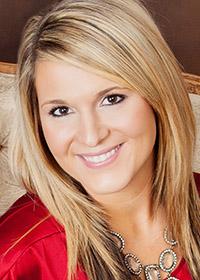
Do you prefer the purple or the blue gloves? How Christie Clinic cut complexity and saved money without ticking off the docs
When we asked Jason Hirsbrunner, Christie Clinic’s director of support services and a continuous-improvement advocate, for examples of big cost savings, we knew we were in the no-man’s land where many health care materials management execs have been lost forever. It seems that pure spend management and parts consolidation doesn’t always go over well with the medical staff.
I can think of two big health care institutions where the doctors fought the elimination of their favorite — but redundant — supplies, and in the battle for freedom of choice over dictated spend reduction, guess who won?
But Hirsbrunner figured out a better way to simplify the pharmaceutical world for workers as well as patients. And along the way, the savings just come naturally.
“The problem we had was that we were buying whatever anyone wanted, whenever, creating a nightmare for organizational reconciliation,” Hirsbrunner said. “The second problem was that we were not helping them make educated decisions. We weren’t helping them understand what it cost to order purple and white and blue and green and red gloves, for example.”
Hirsbrunner tasked Material Manager Gina Romine with resolving the issue. When Christie Clinic sold off its retail pharmacy and offered a Walgreen’s satellite store in its place, it still needed to purchase and sell at a profit. And the management details and workflows that they studied had some surprises.
As temporary pharmaceutical manager, Romine discovered a tangled web of emails flowing from individuals all over the clinic ordering their own supplies. She even found paper orders stacked on the counter. Five minutes after placing a routine order, some other staffer would drop an emergency order in the bucket, which would launch high-priority speedy couriers down the interstate. Emergencies were not an off-the-grid occurrence. She suspected that some orders were placed twice, “just to be sure” the items made it into stock.

“People weren’t talking to each other,” Romine said. “We had to streamline the process. We changed the email process so that we could see all of the orders and departments generating them. Plus, we could see if the same or similar items had been requested.”
The way Hirsbrunner sees it, this is just one more battle in the “this is the way we have been doing it” campaign.
“It’s not a monumental improvement in ROI, but it’s a change in people’s time,” Hirsbrunner said.
Time is money, “and we are creating an environment where the people who are doing the work made the suggestions for improvements. What Gina did was unleash a flood of incredible small improvements.”
The improvement didn’t stop there as Romine dug deeper into more complex workflows.
“After we got the email system in place, we had only two staffers in the pharmaceutical department, and we realized that we were spending lots of time sorting, repacking and dispatching incoming supplies to our 17 different locations. It was a grind. We had two-dozen orders per day, everything was piecemeal and materials were being touched a lot because everything had to be opened and repackaged for dispatch. We had to break down lots to go into smaller locations. We knew we didn’t want to overstock satellite departments, so it was a struggle to balance what was efficient for us with inventories. We didn’t want a satellite, for example, to have a year’s worth of drugs on the shelf.”
When Romine noticed how much time the breakdown and repackaging for shipment was taking, she initiated conversations with distributors. One (McKesson) discovered that it could dropship directly, by-passing the pharmacy altogether. Instead of “doing it the way we’ve always done it,” a cycle that entailed materials shipped to the warehouse, then transported to the pharmacy, where the boxes were broken down and distributed by couriers who made final deliveries, McKesson helped Christie change the workflow. Romine estimates that staffers spent 20-30 minutes per warehouse order. Late orders could be dropshipped by McKesson.
Although it is not always cost-effective to dropship everything, Romine had good preliminary discussions to identify best cost options and McKesson became a great help with routine items for purchasing, which manages 300 active SKUs. But the best innovation they brought to the process was to set up different accounts for various locations and to assign user names for approval levels, with Romine still holding final approval.
“McKesson took over the billing piece, which had to be done before the end of every day, and now the consuming department that gets the revenue also gets the expense. “
Hirsbrunner saw other collateral benefits from these simple improvements.
“Team member satisfaction and trust grew. Our departments always trust Gina to get them what they need. Plus, there is a visceral result when a staffer sees confirmation for an order that they needed. When we saw qualitative improvement, other staffers came to ask when we were going to turn the system on for them too. The physicians and managers who had to go through a daunting approval process now can see a better way. If you are actively chasing ROI, you’re missing the point. You want to make the right work easy to do.”
Romine constantly asks herself, “How do I make it easy for people?” The result is that new improvements appear. Further, they didn’t lose the couriers who ran milk runs. “Now,” said Hirsbrunner, “they run on dispatch. We were supporting 16 locations in a 30-mile radius in all directions with multiple trips. So dropshipping helped reduce some of that. We still have emergency shipments, but dropships and a streamlined ordering process have been a big change. But here’s the kicker: We didn’t tell our people what they could or couldn’t buy. Instead, we tried to figure out how we could get better with the process of buying. There is ample opportunity there. We asked ourselves, could we improve the process?”

Named by Fortune magazine a "Pioneering Woman in Manufacturing," Patricia E. Moody, The Mill Girl at Blue Heron Journal, tricia@patriciaemoody.com, is a business visionary, author of 14 business books and hundreds of features. A manufacturing and supply management consultant for more than 30 years, her client list includes Fortune 100 companies as well as start-ups. She is the publisher of Blue Heron Journal, where she created the Made In The Americas (sm), the Education for Innovation (sm) and the Paging Dr. Lean (sm) series. Her next book about the future of manufacturing is The Fourth Industrial Revolution. Copyright Patricia E. Moody 2013. With permission.


